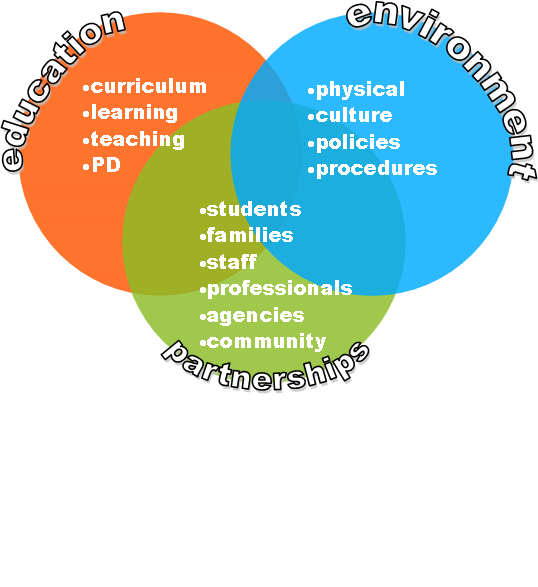
Learning objective
Students identify the correct names and location of their body parts (which may include genitalia).
Take home messages
Curriculum links
HPE: Being healthy, safe and active
- The different parts of the body and where they are located.
International technical guidance on sexuality education
Key concept 4.2 (5-8years)
- Everybody has the right to decide who can touch their body, where and in what way.
Key concept 6.1 (5-8 years)
- It is important to know the names and functions of one's body and it is natural to be curious about them, including the sexual and reproductive organs.
Materials
- Teaching resource: Child body outline - A3 hardcopy or electronic.
- Body jigsaw - enlarge the Body outline on to A3 (minimum) colour card and cut into 6 jigsaw sections. Enough for each student to have 1 body section each.
- Alternatively - draw large body outlines onto butchers' paper in different coloured marker and cut into 6 sections to create the jigsaw.
Before you get started
- Children need to know the correct names for the parts of their body. Using the correct terminology helps them to speak without embarrassment so that they have the language to ask questions, seek help and explain any changes of concern accurately. This is particularly important for protecting children against sexual abuse.
- This learning activity preludes Learning activity: Public and private body parts. Private body parts may naturally come up in discussion in this lesson.
- The correct names of the private parts are vulva, vagina, breasts, penis, testicles, anus and buttocks (or bottom).
- People often use the word 'vagina' when they mean 'vulva'. The vagina is the inside tube leading up to the uterus (womb). The vulva is the outside part made up of the clitoris and the labia (inner and outer lips).
- For more information see the FAQ: How early should you introduce the names of body parts?
- 'Public' body parts depend on cultural contexts. Some cultures consider hair, face, arms, stomach, etc 'private' body parts in the sense that they are covered up in public. However, for the purpose of protective behaviours, 'private' body parts refers to the sexual body parts.
Learning activities
Body jigsaw
10 min
- Display a copy of Teaching resource: Child body outline.
- Give each student a Body Outline - jigsaw piece (some children may need to be given more than one to cater to different group sizes).
Ask:
Raise your hand if you are holding a body part that is an arm.
Raise your hand if you are holding a leg/head/neck/shoulder/elbow/etc.
- Grouping strategy: Jigsaw. Have students join the jigsaw pieces by colour to form a full human body and groups to work in for the next activity.
Hokey pokey
15 min
- Sing Hokey Pokey as a class using traditional lyrics to begin with.
- Ask:
What other body parts can you see that can be included in this song?
(elbow, shoulder, hip, knee, ankle, etc)
- Sing Hokey Pokey using some of the other external body parts the students listed.
- Explain:
"These are all body parts that we can see. The body parts on the 'outside' are called 'external' body parts."
- Ask:
What body parts do we have that you cannot see (the parts that are on the inside)? These are called 'internal' body parts. You might like to remember this by the word 'in'.
(brain, heart, stomach, lungs, etc)
How might these body parts be added to the Hokey Pokey song?
(Point to the external part closest to that part e.g. head for brain)
Teaching tip: Private body parts may come up naturally in these conversations. That is OK. Help students to refer to the body parts using the correct terminology and address them in the same way that you do any other body part. Private body parts are covered specifically in the Learning Activity: Public vs private body parts.
Draw and label
15 min
- Allow students time to draw all of the internal and external body parts on the combined jigsaw pieces.
Alternative: use craft materials to create the different body parts (e.g. squiggle of wool for hair, popsticks for bones).
3-2-1 Reflection
5 min
- Ask:
What is an external body part? (Remember 'ex' means out)
(a body part we can see, body parts on the outside, legs, eyes, nose, elbow, knee, ankle, etc)
What is an internal body part? ('in' for 'inside' and 'internal')
(a body part we can't see, body parts on the inside, stomach, lungs, heart, brain, etc)
Health promoting schools

Families
- Send the Talk soon. Talk often link to parents and encourage them to read pages Ages and Stages 2-5 years and Keeping children safe.



